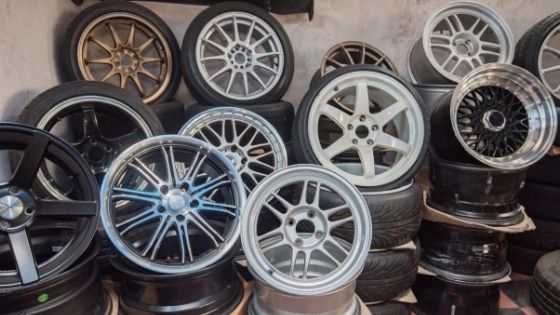A vehicle’s wheel hub is the central rotating element that keeps the wheel in place. On some vehicles, wheel hubs are connected to CV shafts or stub axles via wheel bearings. The axle of a rear-wheel-drive vehicle may be directly mounted to the end instead of being attached to the wheel hub. Front-wheel-drive cars have bearings in their wheel hubs, and some vehicles have electrical connections for tire speed sensors and anti-lock brakes there as well.
On certain automobiles, the wheel hub also includes electrical connections for sensing wheels’ speeds and anti-lock brake sensors. The studs or stems that are threaded to allow lug nuts to be installed are also located within the perimeter of this component.
Disc brakes
Step 1
Place the measuring tape beneath the vehicle so that it hangs over one side. Locate the two hub caps on each side and raise them gently. Remove one of the wheels from the car entirely, using a wheel lug wrench or tire iron as needed. set your timer to 1 minute while recording every measurement with your stopwatch.
Raise one of the front or rear hubs on one corner, depending on which hub you wish to measure. Use a 2-ton or greater capacity jack to lift the car safely. Set a jack stand beneath either the lower control arm or axle housing, just behind where you lifted off one of the wheels. Completely remove one of the vehicle’s wheels using a wheel lug wrench or tire iron.
Step 2
Remove the calliper mounting bolts from the disc brake unit using a three-eighths-inch drive ratchet and socket. The rear or inner side of the calliper is where you’ll find the calliper bolts. By inserting a pry bar between the top of the rotor and the calliper, you may slide the calliper slightly away from the calliper mounting bracket.
Step 3
Insert a pry bar into the calliper housing hole and push the handle of the pry bar outward to compress the calliper a little. You don’t need to completely press in the calliper. Remove the calliper, set it on top of or hang it below the axle housing behind the brake assembly.
Step 4
Using a three-eighths-inch driver ratchet and socket, loosen the calliper bolt from the car. After removing the calliper bracket using a three-quarter inch driver ratchet and socket, remove the rotor to expose the wheel hub.
There are two ways to measure the wheel hub diameter. Place a tape measure across the entire face of the hub and make sure it reaches the centre. The wheel hub is a flat, circular piece of metal with tire lug studs sticking out of it. The wheel hub is connected to one or both knuckle assemblies, depending on whether you’re measuring the front or rear of your vehicle. Make a note of your findings.
Drum Brakes
Step 1
Determine the distance between your car’s hubs by raising the front or rear of the vehicle on one side. To raise a vehicle, use a 2-ton or greater capacity jack. Set a jack stand beneath the lower control arm or the axle housing just behind the wheel you have lifted. Remove the wheel from your automobile completely, using a wheel lug wrench or tire iron.
Step 2
By hand, remove the brake drum from the brake assembly. Apply a pry bar between the rear of the brake drum and the backing plate if the brake drum refuses to come off. Loosen the brake drum from the wheel by shimmying it with a pry bar. Continue this procedure until you’ve fully removed the disc.
Measure across the face of the exposed wheel hub, which protrudes out from the middle of the drum brake assembly. Take your measurement across the front of the hub, which is also known as its diameter. Make sure your tape measure reaches within a millimetre of the centre. Keep track of your measurements.
If you want more assistance in terms of you wheel hubs, why not contact CVHubs?




















